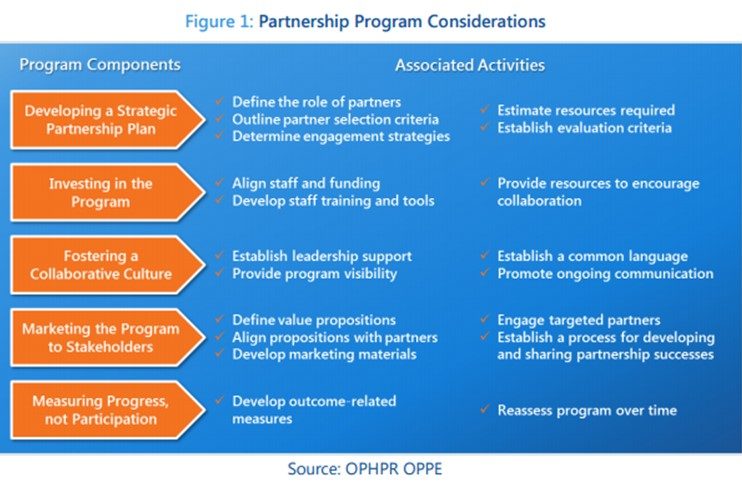It is widely agreed upon that corporate innovation is changing. Technology and the commercial environment is rapidly evolving, reducing barriers to innovation. Research Technology Management asserts that as a result, small companies are increasingly capable of driving disruption.
Developing strategic partnerships is one method for growth and innovation that is trending among organizations. Established companies are leveraging the “fresh ideas and approaches” of startups, creating what Research Technology Management identifies as “win-win relationships that acknowledge the needs of the startup and fulfill the needs of the corporation.”
To development a partnership program, the CDC advises creating a “strategic partnership plan to outline goals and required resources.” Figure 1 presents considerations for program components and associated activities:
Creating an alliance is a risk that can lead to conflict; however, the Harvard Business Review argues that successful alliances have some sort of “productive irritation” or a “creative tension between differing ideas.”
For example, Eli Lilly and Company has several alliance partners. The company has been surveying its alliances for 14 years. According to survey data, differing professional opinions creating “irritation” while working towards the best solution, is a forecaster of technical success. Enrique Conterno, Lilly company representative explains, stating “conflict sharpens the senses; it invites full engagement in solving important problems.”
Harvard Business Review offers the following advice to leaders looking to benefit from conflict between alliances and strategic partners:
- Focus on the areas of risk that produce the most productive conflict
- Focus your conflict-management resources where it matters most
- Train key alliance personnel to listen and make space for disagreement and conflict
- Establish an alliance management function
Have you thought about how a strategic partnership might benefit your organization?


